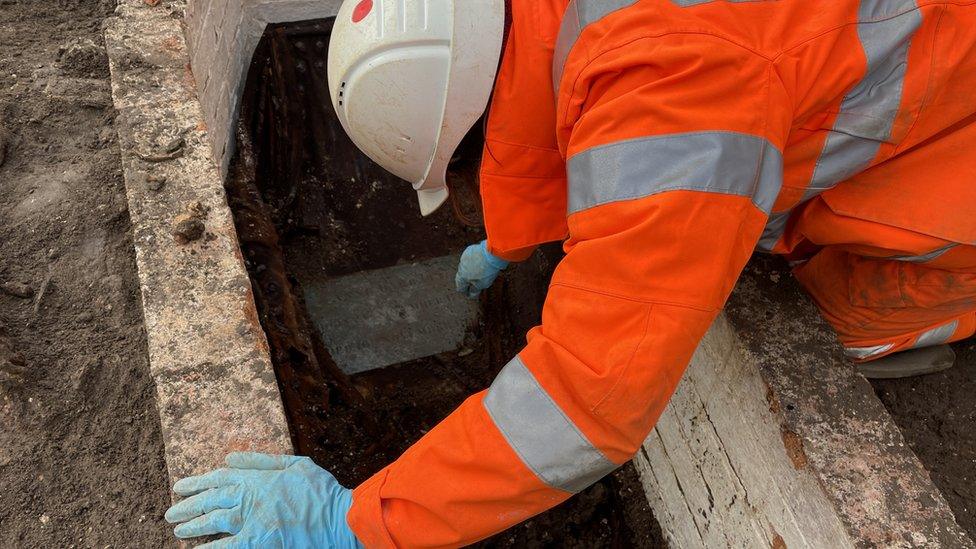Burials found beneath Leicester Cathedral during restoration
- Published

The archaeological investigation is part of a £12.7m restoration project
Archaeologists have uncovered more than 100 graves next to a city cathedral undergoing a £12.7m restoration.
Leicester Cathedral closed in January to allow the construction of a visitor and learning centre.
So far about 125 burials have been found, with hundreds more expected. Teams also want to find out how long it has been a site of Christian worship.
All the remains are due to be reinterred within the cathedral grounds once the project is complete.
Matthew Morris, from the University of Leicester Archaeological Services (ULAS), said the work carried out so far was "really just preparation" with hundreds more grave sites yet to be excavated.

About 150 graves have been excavated in the grounds of Leicester Cathedral
"We have hardly scratched the surface on this one. The footprint of the new building is quite small but it's in the area of the graveyard that is probably one of the most densely used because of its proximity to the high altar. It is probably going to have the higher elements of the parish - one of the most in-demand areas," he said.
Mr Morris, who led the excavation of the nearby grave site of King Richard III, said burial records showed that from about 1550 to 1850, 16,500 people were buried in the site.
"There might be 800 or 1,000 years of burial in this graveyard. It's quite astounding," he said.
The remains uncovered at the site will be carefully analysed by ULAS to better understand the lives of early members of the church's congregation.

Graves uncovered include this brick-lined example, usually an indication of wealth
The building has only been a cathedral since the 1920s but it was always one of the more important parish churches in Leicester since at least the Norman conquest, Mr Morris said.
The original St Martin's Church was constructed in the 12th Century but substantially rebuilt between the 14th and 16th Centuries and then again by the Victorians.
Now archaeologists hope to discover if there was a church on the site even earlier and if a more accurate date of foundation can be uncovered.
"We think the burial soil could be up to two-and-a-half metres thick and then there could be Roman archaeology under that... we know there is a Roman building under the cathedral tower.
"One of the big questions is going to be what is underneath the graveyard? We also hope it will help us date the origin of the church. It might give us this important beginning date," Mr Morris said.

Follow BBC East Midlands on Facebook, external, on Twitter, external, or on Instagram, external. Send your story ideas to eastmidsnews@bbc.co.uk, external.
Related topics
- Published14 December 2021
